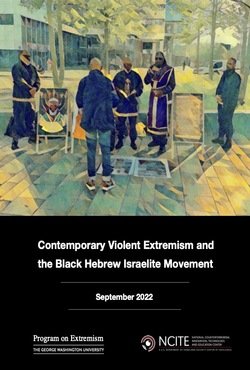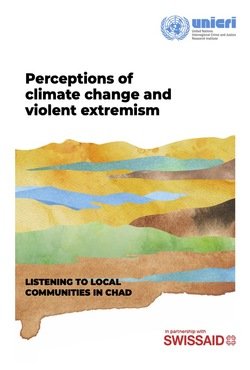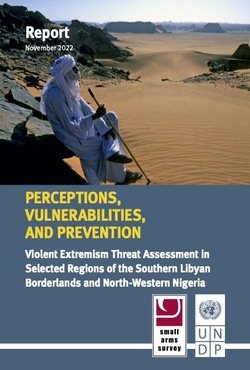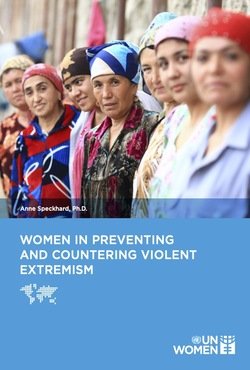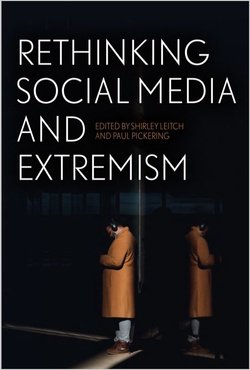By The Violence Prevention Network and the Centre for Feminist Foreign Policy
Anti-feminist and anti-gender ideologies - and their basis in hostility and hatred towards women and LGBTQI* people - have long been an overlooked factor in analysing radicalisation and violent extremism. Both ideologies strongly appeal to groups organised around exclusionary principles because they provide language and a framework for the defence of hierarchical structures in society (Denkovski et al., 2021, 18). This trend is increasingly manifesting itself across a spectrum of violence. Despite a striking prevalence of anti-feminism and anti-gender attitudes within extremist worldviews, these motives have been considered at best secondary when analysing extremist attacks and groups (Wolf 2021). Yet, for extremist actors, they constitute a core element of their ideologies, a relevant area of recruitment within and outside extremist scenes, and an opportunity for strategic alliances. Throughout right-wing attacks in the past decade, such as those in Christchurch, Hanau, and Halle, a clear pattern of anti-feminist and misogynistic beliefs can be detected. Within such attacks, the ideological basis for mass public violence is formed by adherence to multiple, overlapping exclusionary attitudes. For instance, one conspiracy theory that finds popularity among right-wing actors is that of the “Great Replacement”. According to this idea, feminism was invented by Jewish elites to lower birth rates and advance mass migration, with the goal of replacing white European populations with non-European, non-white people, specifically Muslims (Fedders 2018). The Christchurch attacker had uploaded an online “manifesto” titled “the Great Replacement” before the attack on two mosques that killed 51 people - illustrating how anti-feminism is often intricately interwoven with racist and anti-Semitic thinking. The issue of overlapping ideological codes, elements, and groups is becoming increasingly important as we witness growing complexity in the right-wing landscape of radicalisation and violence. However, misogyny and anti-feminism are also integral to violent attacks outside of right-wing scenes. Several terrorist attacks by members of the incel1 community, such as those in the Californian city of Isla Vista in 2014, as well as the 2018 Toronto and 2019 Tallahassee attacks, have led to an increased awareness of the incel threat and the beginning of its consideration as a security threat in Western countries (see, for instance, Moonshot 2021). While embedded in a much broader online misogynist scene, misogynist incel ideologies promote particularly extreme misogyny, anti-feminism, and sexism. Misogynist incels see women as depriving them of their natural entitlement to sex. The use of dehumanising and aggressive language – and, in parts, open calls to violence Anti-feminist and anti-gender ideologies - and their basis in hostility and hatred towards women and LGBTQI* people - have long been an overlooked factor in analysing radicalisation and violent extremism. Both ideologies strongly appeal to groups organised around exclusionary principles because they provide language and a framework for the defence of hierarchical structures in society (Denkovski et al., 2021, 18). This trend is increasingly manifesting itself across a spectrum of violence. Despite a striking prevalence of anti-feminism and anti-gender attitudes within extremist worldviews, these motives have been considered at best secondary when analysing extremist attacks and groups (Wolf 2021). Yet, for extremist actors, they constitute a core element of their ideologies, a relevant area of recruitment within and outside extremist scenes, and an opportunity for strategic alliances. Throughout right-wing attacks in the past decade, such as those in Christchurch, Hanau, and Halle, a clear pattern of anti-feminist and misogynistic beliefs can be detected. Within such attacks, the ideological basis for mass public violence is formed by adherence to multiple, overlapping exclusionary attitudes. For instance, one conspiracy theory that finds popularity among right-wing actors is that of the “Great Replacement”. According to this idea, feminism was invented by Jewish elites to lower birth rates and advance mass migration, with the goal of replacing white European populations with non-European, non-white people, specifically Muslims (Fedders 2018). The Christchurch attacker had uploaded an online “manifesto” titled “the Great Replacement” before the attack on two mosques that killed 51 people - illustrating how anti-feminism is often intricately interwoven with racist and anti-Semitic thinking. The issue of overlapping ideological codes, elements, and groups is becoming increasingly important as we witness growing complexity in the right-wing landscape of radicalisation and violence. However, misogyny and anti-feminism are also integral to violent attacks outside of right-wing scenes. Several terrorist attacks by members of the incel1 community, such as those in the Californian city of Isla Vista in 2014, as well as the 2018 Toronto and 2019 Tallahassee attacks, have led to an increased awareness of the incel threat and the beginning of its consideration as a security threat in Western countries (see, for instance, Moonshot 2021). While embedded in a much broader online misogynist scene, misogynist incel ideologies promote particularly extreme misogyny, anti-feminism, and sexism. Misogynist incels see women as depriving them of their natural entitlement to sex. The use of dehumanising and aggressive language – and, in parts, open calls to violence provides the framework in which attacks, as mentioned above, occur. The most well-known incel attacker, for instance, just weeks before the attack in Isla Vista called upon incels to “realise their true strength and numbers”, “overthrow this oppressive feminist system”, and “start envisioning a world where WOMEN FEAR YOU” (Glasstetter 2014). These attacks were broadly referenced and discussed within incel and misogynist scenes and the extreme right more specifically. In Halle, the right-wing extremist who killed two people and tried to enter a local synagogue was listening to music that makes explicit references in name and content to the incel attack in Toronto in 2018.
Berlin: Violence Prevention Network, 2021. 15p.










